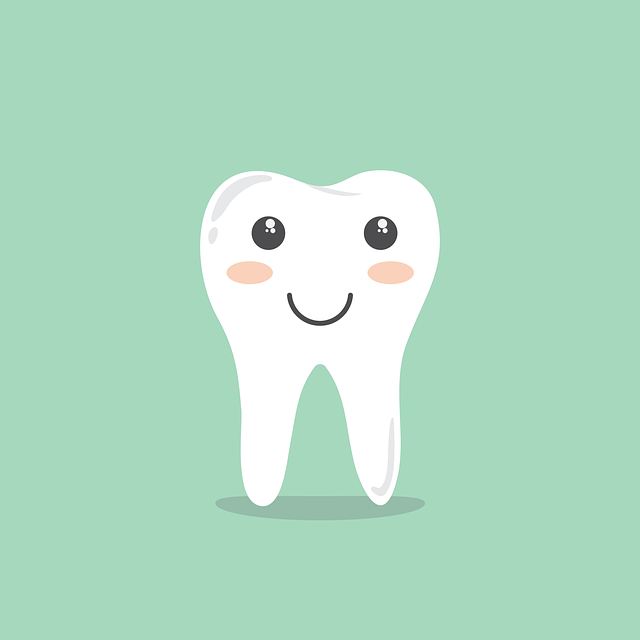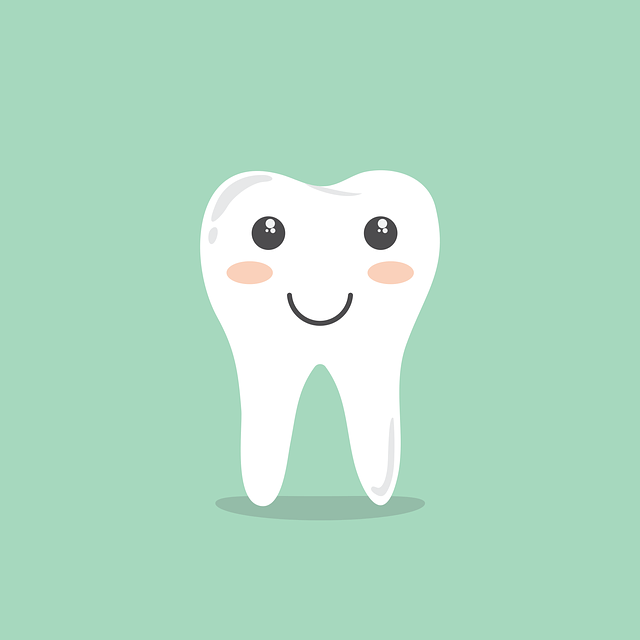Retainers vs. Aligners: Which Is Right for Your Smile?
Welcome to the world of modern orthodontics, where achieving a flawless smile has become more convenient and customizable than ever before. With advancements in dental technology, patients now have a choice between two popular teeth-straightening options: retainers and aligners. Both these methods offer unique benefits, but determining which one is best suited for your smile requires careful consideration. In this article, we will delve into the nuances of retainers and aligners, providing you with the knowledge needed to make an informed decision about which option will truly transform your smile. So, let’s explore the world of orthodontics and discover which path leads to your picture-perfect smile!
1. Understanding Retainers and Aligners: A Comprehensive Guide to Perfecting Your Smile
Retainers and aligners play a crucial role in achieving a flawless smile. Whether you’re looking to correct misaligned teeth or maintain the results of orthodontic treatment, understanding these dental devices is essential. In this comprehensive guide, we’ll delve into the world of retainers and aligners, providing you with all the information you need to perfect your smile.
Retainers are custom-made devices that are typically used after orthodontic treatment to keep your teeth in their new positions. They are usually made of clear plastic or metal wires and are worn over the teeth. Here are some key points to remember about retainers:
- Retainers help prevent teeth from shifting back to their original positions
- They should be worn as directed by your orthodontist, usually for a certain number of hours each day
- Proper care and cleaning of retainers is important to maintain their effectiveness
Aligners, on the other hand, are a popular alternative to traditional braces for straightening teeth. They are clear, custom-made trays that fit snugly over your teeth and gradually move them into the desired position. Here are some key points to keep in mind about aligners:
- Aligners are practically invisible, providing a discreet way to straighten your teeth
- They should be worn for at least 20-22 hours per day for optimal results
- Unlike braces, aligners can be removed while eating, brushing, and flossing, allowing for better oral hygiene
By understanding the differences between retainers and aligners and following your orthodontist’s instructions, you can achieve the smile you’ve always dreamed of. Remember to consult with a dental professional to determine the best option for your specific needs.

2. The Battle of Retainers vs. Aligners: Unveiling the Pros and Cons for a Flawless Smile
When it comes to achieving a flawless smile, two popular options are retainers and aligners. Let’s explore the pros and cons of each to help you make an informed decision:
Retainers:
- Pros:
- Retainers are an effective solution for maintaining teeth alignment after orthodontic treatment.
- They are discreet and usually made of clear plastic, making them less noticeable than traditional braces.
- Retainers are removable, allowing for easy cleaning and oral hygiene maintenance.
- Cons:
- Wearing retainers requires discipline, as they must be worn consistently for several hours a day or during sleep.
- Retainers can cause slight discomfort or speech impediments initially, but these issues usually resolve with time.
Aligners:
- Pros:
- Aligners, such as Invisalign, offer a virtually invisible and aesthetically pleasing alternative to metal braces.
- They are removable, allowing for easy eating, brushing, and flossing without any dietary restrictions.
- Aligners gradually move teeth into the desired position, providing a comfortable and gentle orthodontic experience.
- Cons:
- Aligners require strict adherence to wearing them for at least 20-22 hours a day to achieve optimal results.
- They may require multiple sets of aligners throughout the treatment process, which can be time-consuming and costly.
Ultimately, the choice between retainers and aligners depends on your specific orthodontic needs, lifestyle, and preferences. Consulting with a trusted orthodontist will help you determine the best option for achieving your desired flawless smile.

3. Decoding the Differences: Choosing Between Retainers and Aligners for Your Orthodontic Journey
When it comes to orthodontic treatment, two popular options are retainers and aligners. Both serve the purpose of straightening teeth and improving your smile, but there are some key differences to consider. Let’s take a closer look at these differences to help you make an informed decision for your orthodontic journey.
1. Treatment Process:
- Retainers: Retainers are typically used after braces to maintain the newly aligned teeth. They are custom-made to fit your mouth and are worn for a certain period, usually at night. Retainers help prevent the teeth from shifting back to their original positions.
- Aligners: Aligners, on the other hand, are an alternative to traditional braces. They are a series of clear, removable trays that gradually move your teeth into the desired position. Each aligner is worn for a specific period, usually around two weeks, before progressing to the next one.
2. Appearance:
- Retainers: Retainers are often made of clear plastic or wire, making them less noticeable compared to traditional braces. They are discreet and blend in with your natural teeth.
- Aligners: Aligners are virtually invisible, as they are made of transparent plastic. This makes them an appealing choice for individuals who are conscious about the appearance of their orthodontic treatment.

4. Straightening Smiles: Examining the Benefits and Drawbacks of Retainers and Aligners
When it comes to achieving a straighter smile, two popular options are retainers and aligners. Both have their own set of benefits and drawbacks, allowing individuals to choose the best option for their specific needs. Let’s take a closer look at these orthodontic devices:
The Benefits of Retainers:
- Retainers are often more affordable than aligners, making them a cost-effective choice for many individuals.
- They are a great option for individuals with minor alignment issues or for those who have already completed orthodontic treatment and want to maintain the results.
- Retainers are generally more durable than aligners, which means they can last for a longer period of time without needing to be replaced.
- They are easy to clean and maintain, requiring only regular brushing and occasional soaking in a retainer cleaning solution.
The Drawbacks of Retainers:
- Retainers are not as discreet as aligners since they are typically made of metal or plastic and can be visible when worn.
- They may cause slight discomfort or difficulty with speech initially, but this usually subsides as the wearer adjusts to the retainer.
- Retainers can sometimes trap food particles, which can lead to bad breath or dental issues if not properly cleaned.
- They require consistent wear to be effective, often needing to be worn for at least 12 hours a day or as recommended by the orthodontist.

5. Retainers vs. Aligners: A Head-to-Head Comparison to Help You Determine the Best Option for Your Smile
When it comes to maintaining a beautiful smile after orthodontic treatment, there are two main options to consider: retainers and aligners. Both options have their own unique advantages and it’s important to understand the differences between the two in order to determine which one is the best fit for your smile. Let’s take a closer look at the features of each:
Retainers:
- Retainers are custom-made devices that are typically worn after braces or aligner treatment to help keep your teeth in their new positions.
- They are made from either clear plastic or metal and are designed to fit snugly over your teeth.
- Retainers are usually worn for a specific period of time, such as a few months to a year, depending on your orthodontist’s recommendation.
- They are easy to maintain and clean, requiring only regular brushing and soaking in a retainer cleaning solution.
Aligners:
- Aligners, such as Invisalign, are a series of custom-made clear plastic trays that are worn over your teeth.
- They work by gradually shifting your teeth into the desired position, similar to braces, but without the need for metal brackets and wires.
- Aligners are removable, allowing you to eat, drink, and brush your teeth without any restrictions.
- They are virtually invisible, making them a popular choice for those who want a discreet orthodontic treatment option.
Whether you choose retainers or aligners, it’s crucial to follow your orthodontist’s instructions and wear them as directed to ensure the best results for your smile. Consulting with your orthodontist will help you make an informed decision based on your specific dental needs and lifestyle.
6. Making an Informed Decision: Evaluating the Suitability of Retainers and Aligners for Your Unique Dental Needs
Evaluating the suitability of retainers and aligners for your unique dental needs is an important step in making an informed decision about your orthodontic treatment. Both retainers and aligners serve different purposes and have their own advantages and limitations. Here are some factors to consider when evaluating which option is best for you:
1. Alignment needs: Assess the severity of your misalignment. For minor alignment issues, clear aligners like Invisalign may be a suitable choice. On the other hand, if you have more complex dental issues, such as severe crowding or bite problems, traditional braces or lingual braces might be a better option.
2. Aesthetic preferences: Clear aligners are virtually invisible, making them a popular choice for individuals who are conscious about the appearance of traditional braces. However, if aesthetics are not a major concern for you, retainers or conventional braces could still be effective options to consider.
7. Smile Transformation: Weighing the Options of Retainers and Aligners to Achieve Your Dream Smile
When it comes to achieving your dream smile, there are a variety of options available to you. Two popular choices for smile transformation are retainers and aligners. Both of these orthodontic devices can help straighten your teeth and give you the beautiful smile you desire. Let’s take a closer look at these options to help you make an informed decision.
Retainers:
- Retainers are custom-made devices that are typically used after braces to maintain the position of your teeth.
- They are made of clear plastic or metal wires and are designed to be worn regularly, usually at night.
- Retainers can be either fixed or removable, depending on your specific needs.
- They are a good option if you have minor teeth misalignment or if you have already completed orthodontic treatment and want to maintain the results.
Aligners:
- Aligners, such as Invisalign, are a series of clear, removable trays that gradually move your teeth into the desired position.
- They are nearly invisible and can be easily removed for eating, brushing, and flossing.
- Aligners are a great choice if you have mild to moderate teeth misalignment and want a discreet alternative to traditional braces.
- They offer flexibility and convenience, as you can change the trays every few weeks and monitor your progress.
Frequently Asked Questions
Q: What are retainers and aligners?
A: Retainers and aligners are orthodontic devices used to correct misaligned teeth and improve the overall appearance of your smile.
Q: How do retainers work?
A: Retainers are typically used after braces to maintain the new position of your teeth. They are custom-made to fit your mouth and hold your teeth in place.
Q: How do aligners work?
A: Aligners, such as Invisalign, are a series of clear, removable trays that gradually move your teeth into the desired position. They are customized to fit your teeth and are replaced every few weeks.
Q: Which one is more suitable for minor adjustments?
A: Aligners are often more suitable for minor adjustments, as they can move individual teeth more precisely.
Q: Can retainers fix more complex orthodontic issues?
A: Retainers are not typically designed to fix complex orthodontic issues. They are best utilized for maintaining the alignment achieved with braces.
Q: Are retainers or aligners more comfortable to wear?
A: Both retainers and aligners may cause some discomfort initially as your mouth adjusts to them. However, many find aligners more comfortable due to their smooth design and lack of wires.
Q: Are retainers or aligners more discreet?
A: Aligners, being clear and nearly invisible, are generally considered more discreet than retainers, especially traditional ones with visible wires.
Q: How long do you need to wear retainers?
A: The duration of retainer wear depends on your orthodontist’s recommendation, but it typically ranges from several months to a few years.
Q: How long do you need to wear aligners?
A: The length of time required for aligner treatment varies based on the individual’s orthodontic needs, but it can range from a few months to a couple of years.
Q: Can you eat with retainers or aligners on?
A: It is generally recommended to remove both retainers and aligners while eating to avoid damaging them. This allows you to enjoy your meals without restrictions.
Q: Which option requires more maintenance?
A: Both retainers and aligners require regular cleaning and proper maintenance. However, retainers may require more attention as they can accumulate plaque and bacteria if not cleaned properly.
Q: Are retainers or aligners more expensive?
A: The cost of retainers and aligners can vary depending on the complexity of your case and the provider. Generally, aligners tend to be more expensive due to their advanced technology and customization.
Q: Can I choose between retainers and aligners?
A: The choice between retainers and aligners depends on your specific orthodontic needs. It is best to consult with an orthodontist who can evaluate your case and recommend the most suitable option for you.
Q: Can retainers or aligners be used for everyone?
A: Retainers and aligners can be used for a wide range of orthodontic cases. However, there may be certain situations where one option is more appropriate than the other. Consulting with an orthodontist is essential to determine the best course of treatment for your specific needs.
Q: Can retainers or aligners cause any side effects?
A: Both retainers and aligners may cause some temporary side effects like mild discomfort, speech changes, or excess saliva production. However, these usually subside as your mouth adjusts to the devices.
Q: Can I switch from retainers to aligners or vice versa?
A: In some cases, it may be possible to switch from retainers to aligners or vice versa. However, this decision is highly dependent on your orthodontic needs and should be made in consultation with your orthodontist.
To Wrap It Up
In conclusion, when deciding between retainers and aligners for your smile, it is important to consider your specific dental needs and preferences. Retainers are ideal for maintaining the position of your teeth after orthodontic treatment, while aligners offer a discreet and convenient option for straightening your teeth. Key takeaways from this article include:
1. Retainers are typically used after braces or other orthodontic treatments to maintain the alignment of your teeth.
2. Aligners, such as clear aligners, are a popular choice for those who want a more discreet and convenient option for teeth straightening.
3. Retainers are often custom-made to fit your teeth, while aligners are generally created using digital technology for a precise and comfortable fit.
4. Retainers require consistent wear for effective results, usually at night or as directed by your orthodontist, while aligners need to be worn for at least 20-22 hours a day.
5. Retainers may require periodic adjustments by your orthodontist, while aligners are typically replaced every one to two weeks.
Ultimately, the decision between retainers and aligners depends on your individual circumstances, goals, and preferences. Consulting with your orthodontist will help you determine the best option for achieving your desired smile.






